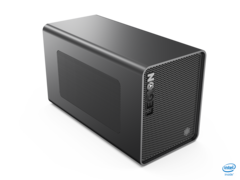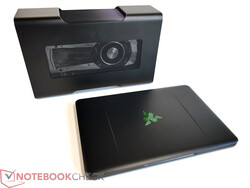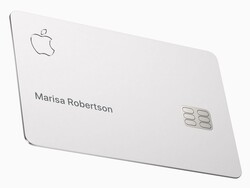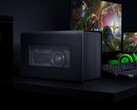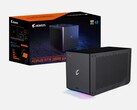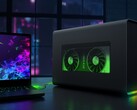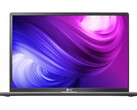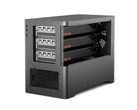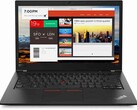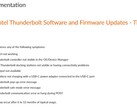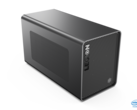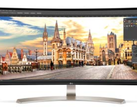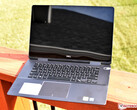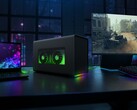When looking for a bit of graphical performance in a laptop, one potential avenue is an eGPU. All you need for a Thunderbolt 3 eGPU is an enclosure, a GPU, and a laptop featuring Thunderbolt 3 that supports eGPUs. While this is a simple enough thing to do, the pricing of enclosures, GPUs, and even good Thunderbolt 3 equip laptops have been rather prohibitive.
However, the price of GPUs might not be as big of a problem soon. Rumors are that NVIDIA is going to reveal Ampere, their next generation GPU architecture, sometime this year. With the announcement of these new GPUs on the horizon, there’s the inevitable drop in price of current GPUs as well. Since a lot of GPUs from previous and current generations are currently entering the used market, the prices of these GPUs should fall even lower with the release of Ampere.
Of course, that's only looking at the price of the GPUs themselves. There's a number of other considerations you have to make when shopping for an eGPU setup as well.
What makes a good eGPU setup?
This answer depends a lot on what you want your eGPU to do. If you're just looking for something to run some light titles, then a lower-end eGPU setup with something like an NVIDIA GTX 1060, or even something as low-end as a GTX 1050 might be sufficient. If you want to play things more serious than low-setting GTA V, then picking something around the performance of a GTX 1080 Ti might be a good idea. Of course, don't blow all of your money on more performance than you need (or can reasonably utilize).
Besides just a GPU and an enclosure, you're going to need a laptop that can keep up with everything else. The thermal performance of your laptop is often something people overlook, but it's very important to ensure you get good frame rates in your games. Games are getting more and more CPU-intensive all the time, so your CPU needs to be able to perform at its best during gameplay.
One of the perks of using an eGPU is that the GPU won't raise ambient temps for the CPU, so all you need is an adequate thermal situation for your CPU to run well. I've written an article about this topic a while ago, but the contents of the article still hold true (assuming your not comparing between Ice Lake and Comet Lake or something like that). If you want a detailed run-down on laptop thermals, you can check that out here. Thermals aren't just "case temperatures" - the more important temperatures are on the inside.
Another notable thing to look for in a laptop is 4-lane Thunderbolt 3 ports. If you plan on using an external monitor for whatever reason, or your GPU technically only uses PCIE-E x8 instead of x16, you might be okay with 2-lanes. However, if you plan on displaying your games on your laptop's screen, 4-lanes is almost necessary if you don't want to see performance degradation. There are still notable performance drops when using Thunderbolt 3 instead of straight PCI-E (like in a desktop), which you can check out our date on in this article. This article is fairly old, but things haven't changed much for every non-Ice Lake part. Bandwidth limitation are still a major factor in eGPU performance.
Recently, Intel introduced Ice Lake (which I'm sure you've heard of by now). Not only did that bring the improvement of a 10nm process compared to 14nm (increasing performance per watt overall), but Intel also integrated the Thunderbolt 3 controller into their CPUs. This both standardized four-lane Thunderbolt 3 ports across all Ice Lake devices, but it also seems to have helped the performance degradation we've seen previously. A user on the Dell subreddit made a post about their XPS 13 7390 2-in-1 where they experienced a slight improvement in GPU performance compared to their older device. This might not be the case for all machines, however.
There aren't any AMD Ryzen Mobile laptops with Thunderbolt 3 support at this time (or even announced), but that could always change. The performance implications of a setup like that are still unknown (since it hasn't been done), but it's unlikely they would perform much worse than pre-Ice Lake CPUs in eGPU applications.
Should you consider brand new eGPU hardware?
The pricing of GPUs isn't the real issue when it comes to eGPU adoption. The actual docks required to run and connect a GPU to a laptop can be quite pricey with some enclosures by themselves costing upwards of $400. Even on the lower end, it's hard to find a decent Thunderbolt 3 enclosure under $250, let alone anything new at around $200 (the closest I could find was an ADT-Link kit, but even then you need to DIY the power input). The prices of these enclosures haven't exactly gone down, despite Intel making the platform royalty-free. If you're just looking at new enclosures products, you're likely still out of luck.
Adding more insult to injury, a lot of the good, new laptops with Thunderbolt 3 are on the expensive side, such as the latest Dell XPS 13 with four PCI-E lanes on its Thunderbolt 3 port. Equip with an Ice Lake processor, the XPS 13 can get great performance out of its small form factor due to the 10nm efficiency gains. On top of that, during a Prime95 stress test, the XPS 13 was able to sustain a fluctuating power draw around 22w at a low 75C. Some tweaking on the device could likely crank that wattage higher, assuming you can tolerate the increase in fan noise and overall heat output of the device.
Things change when you take a look at the used market. Getting a deal on a used laptop equip with Thunderbolt 3 should save you a few hundred dollars (most of the time). Because of bandwidth limitations with Thunderbolt 3, your yields do decrease as you move past the performance levels of the GTX 1080, so sticking with Pascal GPUs might not be a terrible idea. And, again, since it's likely their price will drop, the value proposition of a used enclosure, a used laptop, and a used Pascal (or comparable) GPU is pretty good. Assuming you can find a cheaper used laptop that suits your needs, you should be alright.
Regardless, buying everything new for a setup like this is likely a waste of money.
What about used hardware?
Used tech prices fluctuate all the time, so it's hard to say if you'll be able to find a good deal at any given time. While right now probably isn't the best time to buy a GPU for a Thunderbolt 3 enclosure (as noted in the beginning of the article), it's never a bad time to look for deals on enclosures. You'll be hard pressed to find a day where nobody is selling any enclosures on eBay. You're not always going to find a great deal (many of the good enclosures on eBay tend to be around $200 USD or more), but you're bound to find something eventually.
Luckily, the pricing of your enclosure will be less of a concern when you see how cheap second-hand laptops are. For example, a last-gen XPS 13 9380 with slight cosmetic issues sold recently for roughly $700 USD after shipping. You might think that deals like that are rare, but that's not the case. Plus, there are plenty of older machines that'll work great for Thunderbolt 3 as well. While it's worth checking out eGPU.io's list of "Best Laptops for eGPU," be sure to double-check the thermal performance of the laptops they're suggesting before any sort of purchase. We stress-test our machines in our reviews, so just reference those if you're not sure.
If you're worried about wear, tear, or warranties on your used hardware, just look for it in the photos. Sites like eBay often have a Money Back Guarantee to protect people from scams and deceptive listings, so there's little to worry about when shopping on them. Plus, there's plenty of people selling near-mint devices for great prices. It's worth taking a look, at least. Don't be afraid to look at "old" hardware either. Anything quad core should be fine, assuming it has 4 PCI-E lanes and (importantly) good thermals.
It really depends on what you want and what you need. If you want GPU performance, but you need something in a 14" (or smaller) formfactor, you're likely going to be looking at an eGPU. Asus is introducing the G14 this year, a 14" gaming laptop with an NVIDIA GPU and Ryzen 4000 processor. If that fits your needs, then that might be more up your alley. If you need something smaller (thinner, lighter, or just a smaller footprint overall), then you might have to get an eGPU. If you prioritize battery life and mobility over having performance at your fingertips at all times, then an eGPU might be for you.
It doesn't have to be expensive if you're a smart shopper. Buying used products might make some of you cringe, but for folks on a budget, used is still the best option. Although, if you're on a tight budget, you may want to consider some sort of gaming laptop in the first place. Unless you're blessed with multiple amazing deals, you might end up sacrificing GPU performance for portability. Ultimately, the answer isn't obvious, but it's less of a "no" for people than it used to be.
What's going on in the comments?
A while ago, I mistakenly published this article while drafting it. Apologies to everyone who came across the skeleton of this piece, it was quite an error on my part. Regardless, kony shared some pictures of his old and new eGPU setup which are pretty neat. Cute hamster too. I opted to keep the comments since they were pretty funny. Feel free to add your thoughts to the comments as well.




